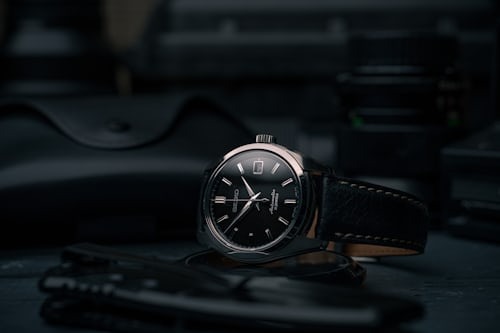Luxury watchmaking is a blend of art and engineering, and few brands master this combination like Chopard watches. Among their finest creations, skeletonized dials stand out as a testament to precision craftsmanship and cutting-edge horology. These intricate timepieces reveal the inner workings of the movement, showcasing the complexity that lies beneath the surface. But what makes Chopard’s skeletonized dials unique? From materials and movement efficiency to the technical process behind open-worked designs, this article explores the science behind these remarkable timepieces.
The Evolution of Skeletonized Dials in Horology
Skeletonized dials have a long history in watchmaking, dating back to the 18th century when master horologists sought to highlight mechanical artistry. By reducing excess metal from plates, bridges, and other components, watchmakers could expose the intricate movement. This process was originally done by hand, requiring immense skill and patience.
Over the years, advancements in technology have allowed luxury brands like Chopard to refine the process, using precision laser cutting and CNC machining to achieve even greater accuracy. Today, Chopard integrates modern techniques with traditional craftsmanship, ensuring that each skeletonized timepiece meets the highest standards of performance and aesthetics.
How Chopard Perfects Skeletonization Without Compromising Strength
Skeletonizing a watch dial is not merely about removing material—it requires a balance between aesthetics and durability. Chopard achieves this by:
Using High-Strength Alloys – Chopard selects materials like titanium and gold alloys that provide durability despite the open-worked design.
Precision Engineering – Advanced computer-aided design (CAD) ensures that the remaining structures maintain their integrity.
Enhanced Structural Reinforcement – Bridges and movement plates are meticulously shaped to support the mechanism while maintaining a visually stunning appearance.
This balance of strength and transparency is what makes Chopard’s skeletonized dials exceptional.
The Role of Movement Efficiency in Skeletonized Chopard Watches
One of the biggest challenges in skeletonization is ensuring that the watch movement retains its efficiency. Open-worked movements often face issues such as decreased rigidity, increased exposure to dust, and higher susceptibility to shocks. Chopard overcomes these issues through:
Optimized Gear Train Layout – By carefully arranging the gears, Chopard reduces energy loss and improves mechanical efficiency.
Shock Absorption Technology – The brand integrates advanced shock-resistant materials to protect the movement from impact.
Protective Coatings – Anti-corrosive treatments help safeguard delicate components from environmental damage.
These innovations allow Chopard’s skeletonized dials to remain not just visually stunning but also functionally reliable.
The Craftsmanship Behind Chopard’s Open-Worked Dials
Chopard’s approach to skeletonization combines traditional hand-finishing with state-of-the-art techniques. The process involves several critical steps:
Designing the Skeletonized Structure
Before any material is removed, Chopard’s designers carefully map out the watch’s structure to ensure the best balance between visibility and durability. Each component is modeled using CAD software, allowing precise calculations to maintain strength.
Laser and CNC Cutting for Precision
Chopard uses advanced laser cutting and CNC (Computer Numerical Control) machining to remove excess metal with micron-level accuracy. This ensures that the remaining framework is both lightweight and structurally sound.
Hand-Finishing for Artistic Detail
Despite the use of modern technology, hand-finishing remains a hallmark of Chopard watches. Artisans spend hours polishing, beveling, and engraving components to enhance their aesthetic appeal. Techniques such as perlage (circular graining) and Côtes de Genève (striping) add an extra layer of refinement.
Assembly and Testing
Once all parts are prepared, expert watchmakers assemble the skeletonized movement. Each timepiece undergoes rigorous testing, including precision calibration, shock resistance trials, and water resistance verification, to ensure long-term performance.
The Materials Behind Chopard’s Skeletonized Dials
The choice of materials plays a crucial role in the durability and aesthetics of Chopard’s skeletonized watches. The brand employs a range of high-quality materials, including:
18K Ethical Gold – Chopard is a pioneer in sustainable luxury, using ethically sourced gold for many of its timepieces.
Titanium and Platinum – These lightweight, corrosion-resistant metals enhance the durability of skeletonized structures.
Sapphire Crystal – High-grade sapphire crystal is used for both the dial and caseback, providing a clear view of the movement while ensuring scratch resistance.
These premium materials contribute to the longevity and visual appeal of Chopard’s skeletonized designs.
Chopard’s Innovation in Skeletonized Movements
Unlike traditional skeleton watches that merely expose the movement, Chopard takes innovation further by integrating high-performance features:
Micro-Rotor Technology – Chopard’s skeletonized automatic watches often feature micro-rotors that enhance energy efficiency while maintaining a slim profile.
Twin Barrel Systems – Some models incorporate dual barrels to extend power reserve, ensuring consistent performance.
Tourbillon Complications – High-end skeletonized models include tourbillons to counteract gravitational effects, improving accuracy.
These advancements place Chopard among the leaders in high-end skeletonized watchmaking.
Why Collectors Value Chopard’s Skeletonized Watches
Chopard’s skeletonized watches are highly sought after by collectors due to their craftsmanship, technical innovation, and exclusivity. Factors that make these timepieces desirable include:
Limited Production – Many skeletonized Chopard watches are produced in limited editions, increasing their rarity.
Artistic and Technical Excellence – The fusion of aesthetics and engineering appeals to both watch enthusiasts and investors.
Strong Resale Value – Due to their limited availability and premium materials, these watches often appreciate in value over time.
For those seeking both a mechanical masterpiece and a long-term investment, Chopard’s skeletonized timepieces remain an excellent choice.
The Future of Skeletonized Watchmaking at Chopard
As horology continues to evolve, Chopard is expected to push the boundaries of skeletonized watchmaking even further. Future developments may include:
Integration of Smart Features – While maintaining traditional craftsmanship, Chopard could explore hybrid movements with smart connectivity.
Advanced Materials – Innovations in carbon fiber and graphene could lead to even stronger and lighter skeletonized designs.
Improved Power Efficiency – Enhancements in energy storage and transmission could lead to extended power reserves in skeletonized models.
With its commitment to precision, artistry, and innovation, Chopard is set to remain at the forefront of luxury skeletonized watchmaking for years to come.












